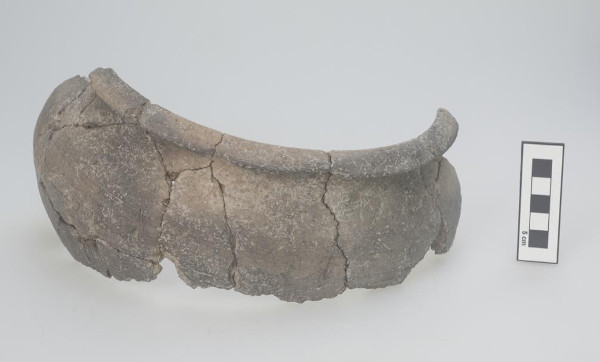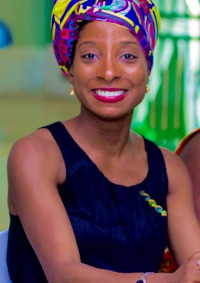
Tell al-Judaidah Publication Project
Alexis Greene, 2021 Summer Stipend Recipient
In May, I was awarded a grant to allow me to join the Tell al-Judaidah Publication Project which is directed by Lynn Dodd at the University of Southern California. Tell al-Judaidah is notable among excavated sites in the agricultural region around Antioch /Antakya. It’s a tall site that has a water source at the foot of the mound, and there are traces of occupation from the 7th millennium BCE into the 1st millennium CE. Our project is focused on the levels of the site dating from about 2000 BCE and later. We have roughly 3000 years to analyze and document.
Working on this project has allowed me to expand my knowledge of archaeology, stratigraphy, ceramics, and artifacts, and database use. When I started working on this project, I did not have any experience in archaeology, but I had a high degree of interest in the ancient world from which biblical traditions emerged. My involvement in this project allowed me to gain skills and to explore new possibilities for my future.
Our team includes the project director, Lynn Dodd, a faculty member at USC, and post-doctoral scholar Michael Johnson. Mike has extensive field experience working at Tell Atchana/Alalakh, a site with Bronze Age palaces (and much more), and that site is an easy day’s walk from Tell al-Judaidah. Another team member, Onur Hasan Kirman, is a doctoral student of Assoc. Prof. Dr. Murat Akar of the Mustafa Kemal University, Hatay, Turkey. He brings expertise in the material culture of the region and is contributing to the analysis of the Bronze Age pottery. Also, I am working in collaboration with undergraduate students at USC, including Lauren Malkoun. All last year, Lauren worked to find solid comparisons for some of the finds that are located in the collection of the Oriental Institute Museum at the University of Chicago. Now, I have joined her in this effort and I continue to learn the ins and outs of this database system that organizes all the details from Tell al-Judaidah that were brought to light by the 1930s era excavation team from Chicago’s Syro-Hittite Expedition.
The records, drawings, photographs and other material from that field project are now physically stored and cared for at the University of Chicago Oriental Institute Museum. All data about the excavation and its finds are coordinated in OCHRE, a relational, hierarchical database system that is accessible by team members around the world. Via the Internet, I have access to the records of that storied expedition’s work at Tell al-Judaidah, including its black and white photos, field notebooks, pottery drawings, and more.
Through reading and discussions with team members, I have learned about key concepts in archaeology. The treasures of the past relate less to gold and more to the clues that a wide range of left-behind materials preserve as we try to piece together the human story (Renfrew & Bahn, 2018). I’ve learned the basics of typology, which refers to the study, analysis, or classification of categories of things, and this can apply to symbols, people, religions, or any category of material culture (Horowitz, 2015). An example of a typological category is simple ware (or plain ware), which is one of several terms used for the Bronze Age plain wheel-made pottery that was produced and consumed in the coastal regions of the Cilician and Amuq Plains and in parts of north-west inland Syria (Pucci, 2019). Another pottery category that I encounter has a distinctive temper and form, as shown in this image of a cook pot with its folded external rim.

 About Alexis: she moved from her home state of Alabama to San Diego in 2019 after working as a teacher for seven years in private schools in the United States and international schools in Ghana, Macau, and Saudi Arabia. Alexis received a Bachelor of Science in Education from the University of South Alabama in 2010 and a Master of Science in Education from Spring Hill College in 2012. In May 2021, Alexis received a Master of Arts in International Higher Education from Boston College. Alexis’ research interests center around the internationalization of higher education in American society and economics of human capital theory. Through her experiences as an expatriate, Alexis developed a passion for helping international students navigate the waters of higher education. Alexis is a member of the
About Alexis: she moved from her home state of Alabama to San Diego in 2019 after working as a teacher for seven years in private schools in the United States and international schools in Ghana, Macau, and Saudi Arabia. Alexis received a Bachelor of Science in Education from the University of South Alabama in 2010 and a Master of Science in Education from Spring Hill College in 2012. In May 2021, Alexis received a Master of Arts in International Higher Education from Boston College. Alexis’ research interests center around the internationalization of higher education in American society and economics of human capital theory. Through her experiences as an expatriate, Alexis developed a passion for helping international students navigate the waters of higher education. Alexis is a member of the